[Solved] How to Set Automatic Backup to OneDrive in Windows 10/8.1/8/7/Vista/XP
To automatically backup data into OneDrive storage device, you may need to learn the detailed steps about settings. Here we also recommend you try Qiling Backup, which allows users to customize the backup schedule.
Contents
- Part 1 What is OneDrive and How to Set Up Auto Backup to OneDrive
- Part 2: Automatic Backup to OneDrive with Qiling Backup
- FAQ about OneDrive
Part 1 What is OneDrive and How to set up auto backup to OneDrive
OneDrive is a useful Microsoft automatic backup for Windows 10, similar to IDrive, pCloud, iCloud, and Google Drive. It supports PC, mobile, and web pages, and users can use it to store or synchronize device data across platforms. OneDrive will provide 5G free storage space, and if you want to get more, you need to spend money to buy.
Microsoft has introduced new folder protection (backup) function for OneDrive. Folder backup will automatically sync your documents, pictures, and desktop folders to ensure that essential PC folders are conserved to cloud service.
Warning:
1. Incremental is not available.
OneDrive currently does not support incremental backups. When the file is modified, it is directly synchronized to the OneDrive cloud. You cannot view the version before the modification.
2. Limited file location.
It should be noted that the backup folder will be moved to the OneDrive directory, and the original folder only retains a "Where is my file" shortcut, pointing to the folder with the same name that has been moved to the OneDrive directory. If you use multiple Windows 10 PCs, OneDrive will automatically keep all these folders in sync. This feature is especially useful if you like to put relevant documents on your desktop. It can protect data security to prevent threats such as hard disk damage, computer loss, or ransomware.
Step 1: Find OneDrive icon on the Deskbar.
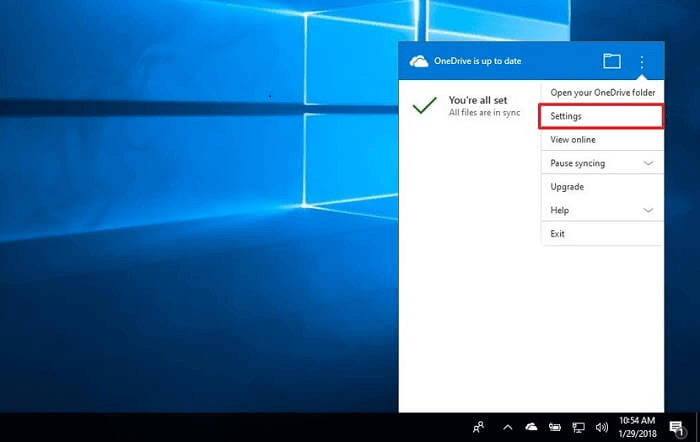
Step 2: Right-click the OneDrive icon, and choose Settings. Find Auto Save in the OneDrive settings of Windows 10
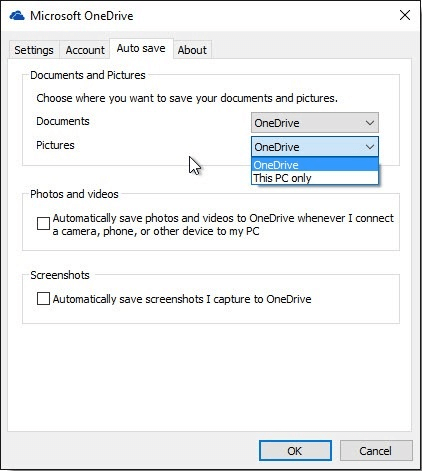
However, it should be noted that the local files of Outlook and OneNote cannot be conserved at present, and if the data is more extensive than 20GB, they cannot be synced.
If you do not want to auto-save any folder, you can click the Auto Save tab, set the Documents and Pictures lists to This PC only, and uncheck the other boxes.
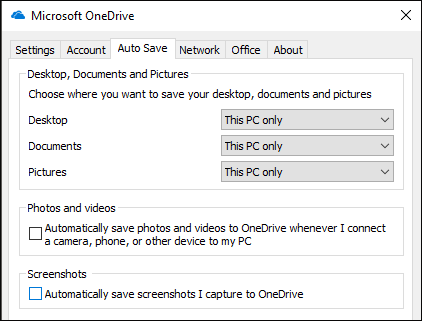
Part 2: Automatic backup to OneDrive with Qiling Backup
Compared with OneDrive backup's limitation mentioned in the previous part, Qiling has five better ways to set automatic backup on Windows 10. Two functions are superior to OneDrive: incremental backup and storage location. And the other three - compression, customization, and preview/view images are worth knowing on the latter part.
1. Incremental backup
A backup of all the data that has changed since the last backup, no matter whether the previous backup was full, differential, or incremental. This backup type is the fastest because it will not re-backup files of earlier tasks.
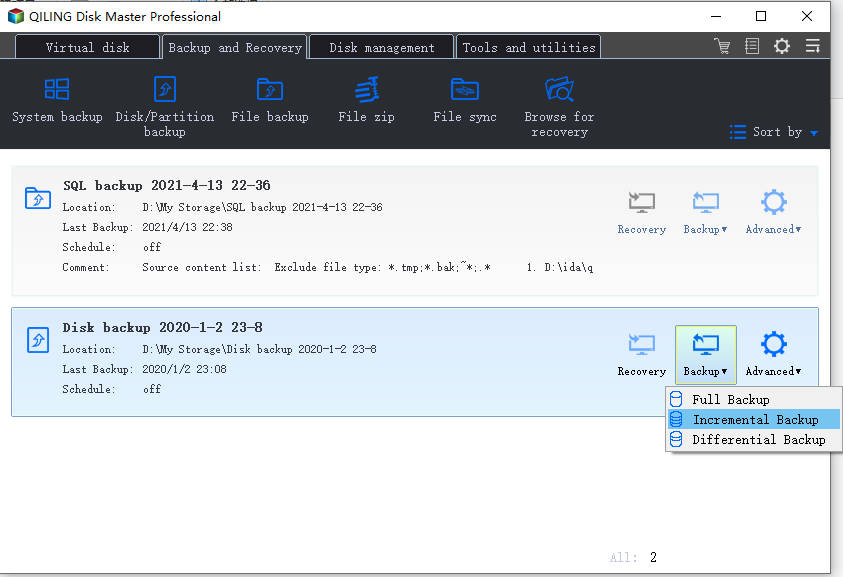
On account of the OneDrive capacity, you may have to choose which part to backup, or your cloud device gets full again and again. Incremental backup is a necessity.
2. No limited by storage location.
If you back up files to OneDrive, you will find your mirror documents are all saved to the OneDrive directory. But Qiling Backup has more storage location choices.
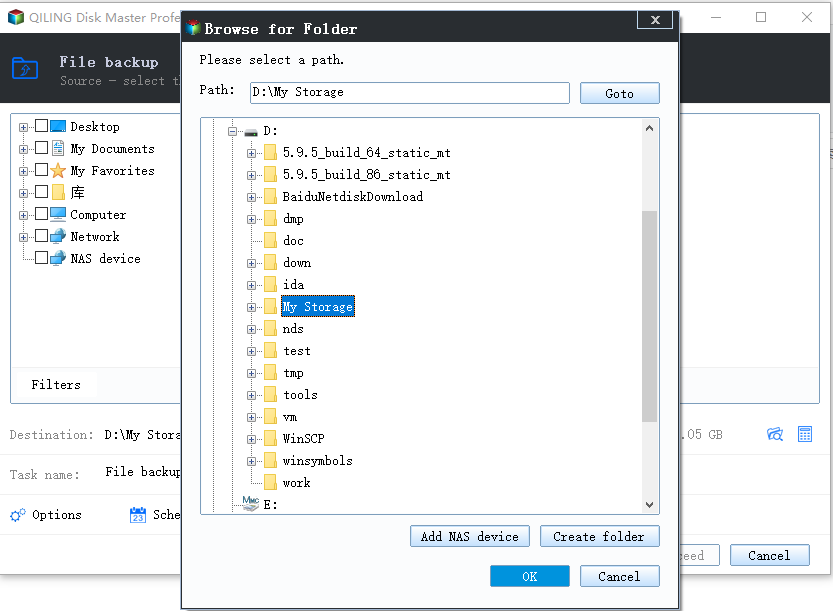
3. Backup compression to further save space.
Considering the capacity limitation of OneDrive or any storage device you use, the compression can maximize pace saving. You can also customize the compression level.
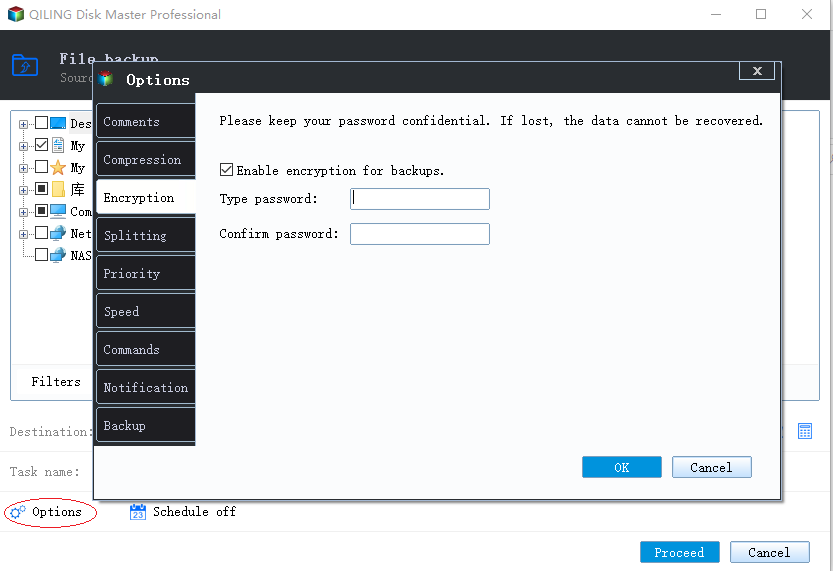
4. Customize backup plan
According to your needs, you can make a backup plan independently.
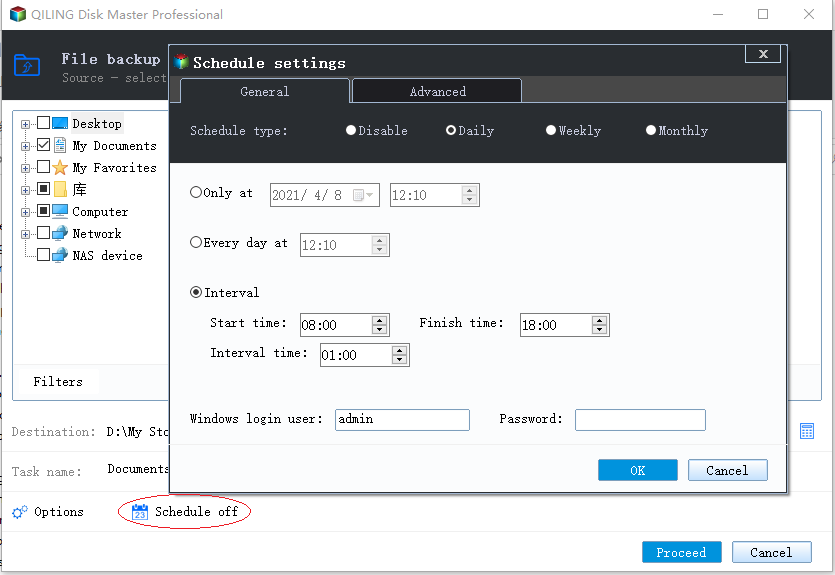
5. Preview and view images
You can preview and view images through the backup path. Find the images that have been backed up. And then right-click to open or do other recovery choices as the picture shows.
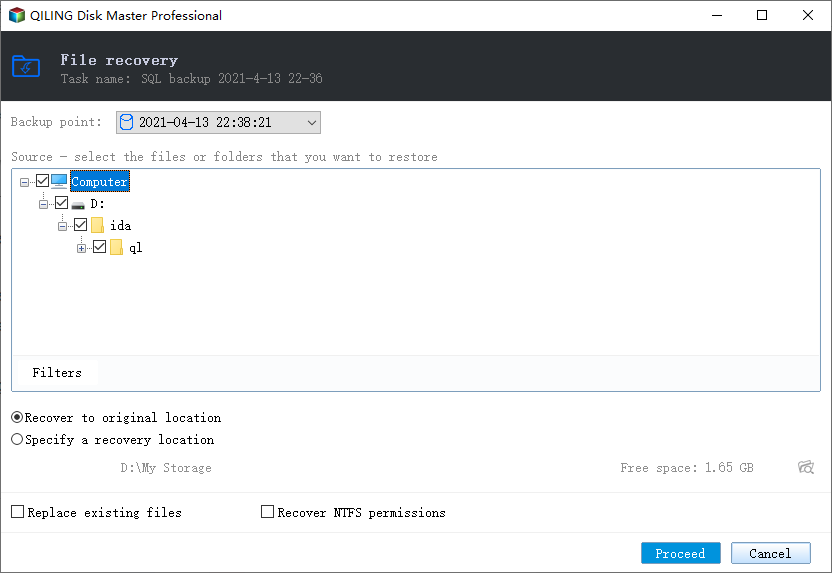
How to backup files/system/disk automatically
Step 1. Launch and run Qiling Backup on your computer. Click "File backup" on the main window.
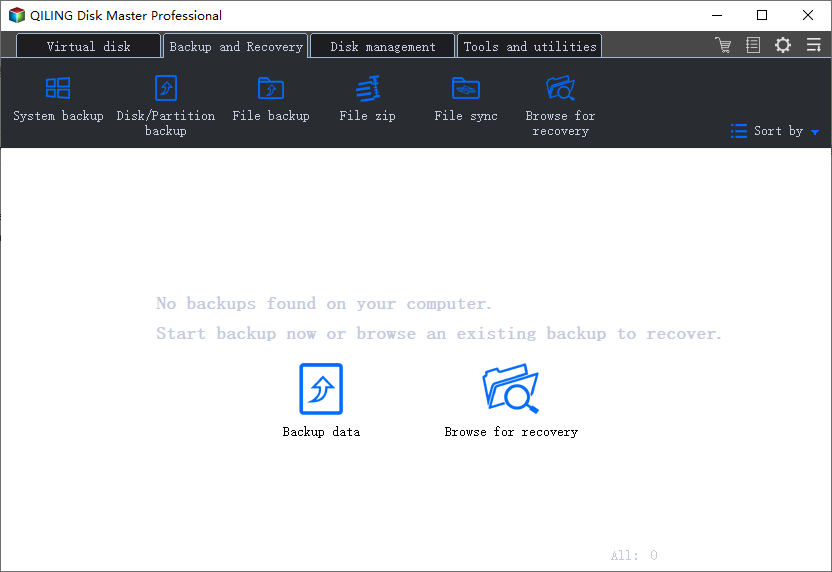
Step 2. Choose the specific files that you want to backup to your cloud account - Google Drive/OneDrive or Dropbox.
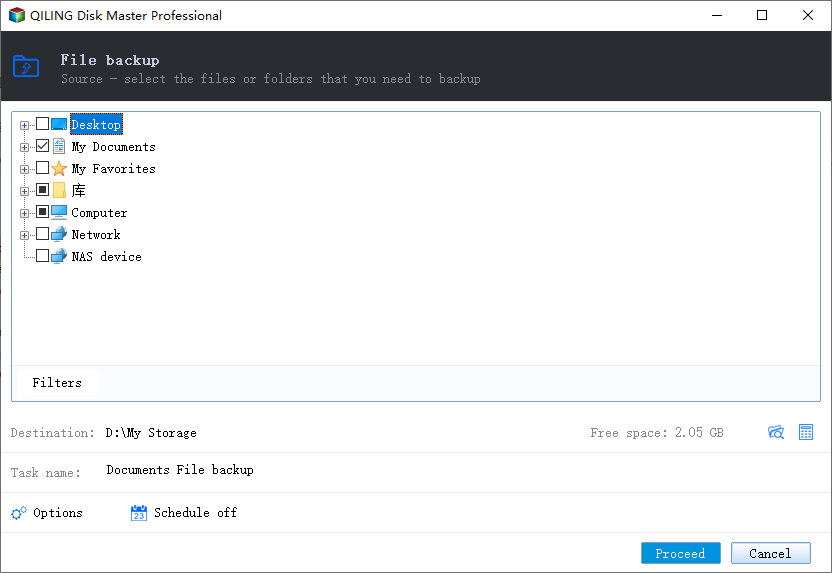
And then, click browse icon at the destination column to select "Cloud Device" and click the "+" icon to access the cloud storage.

Step 3. Select your Cloud storage - Google Drive/OneDrive or Dropbox and sign in to allow Qiling Backup access your account for saving backup images.
Step 4. Click "OK" to let Qiling Backup access and save backup images of your files to Cloud drive and finally click "Proceed" to start backing up your files now.

Wait for the process to finish, and all your videos will be saved to your cloud storage with a compressed format by taking up a small space.
FAQ
1. How to backup your computer to the cloud with OneDrive?
- Open up OneDrive settings and select the Auto Save tab.
- Click the Update folders buttons.
- Select which folders you would like to be backed up and where to store them.
- Click OK.
2. Are OneDrive files stored on my computer?
It depends on your OneDrive settings and your computer version. You can check files on the local OneDrive folder or OneDrive storage in the cloud.
3. What happens if I delete files from OneDrive?
If you delete a file from your cloud, it will be deleted from the local OneDrive folder and vice versa. If you keep the data on the local data and remove them from the cloud, you need to move the local copy to a new folder outside of the OneDrive folder.
4. How do I stop files being saved to OneDrive?
Select Start, type OneDrive in the search box, and then select OneDrive in the search results. Select More > Settings. On the Settings tab, uncheck all the boxes under General. On the Auto Save tab, set the Documents and Pictures lists to This PC only, and uncheck the other boxes.
Related Articles
- Best Disk Cloning Software for Windows 7
- How to Backup Files Before Formatting in Windows 10/8/7 PC and Laptop
- How to Back Up Network Shared Files Using Network Backup Software
- How to Clone Server Hard Drive on Windows Server 2019/2016/2012
- Top 6 Best Incremental Backup Software for Windows 10 [2021 Guide]